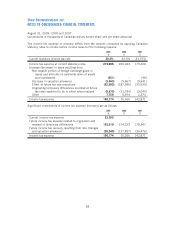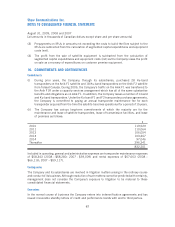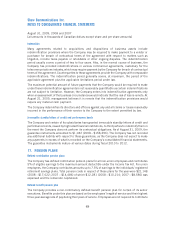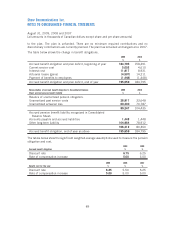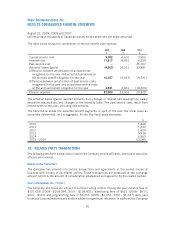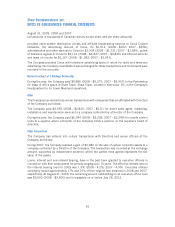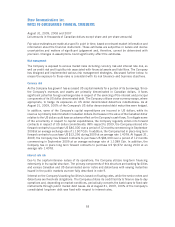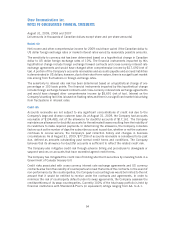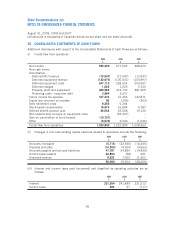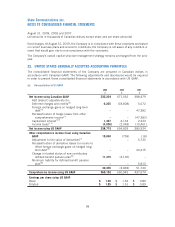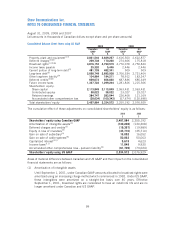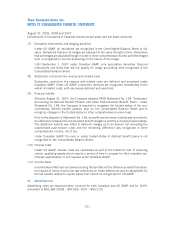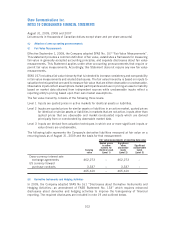Shaw 2009 Annual Report Download - page 96
Download and view the complete annual report
Please find page 96 of the 2009 Shaw annual report below. You can navigate through the pages in the report by either clicking on the pages listed below, or by using the keyword search tool below to find specific information within the annual report.
19. FINANCIAL INSTRUMENTS
Fair values
The fair value of financial instruments has been determined as follows:
(i) Current assets and current liabilities
The fair value of financial instruments included in current assets and current liabilities
approximates their carrying value due to their short-term nature.
(ii) Investments and other assets
The carrying value of investments and other assets approximates their fair value. Certain
private investments where market value is not readily determinable are carried at cost net of
write-downs.
(iii) Long-term debt
a) The carrying value of bank loans approximates their fair value because interest charges
under the terms of the bank loans are based upon current Canadian bank prime and
bankers’ acceptance rates and on US bank base and LIBOR rates.
b) The carrying value of long-term debt is at amortized cost based on the initial fair value as
determined at the time of issuance or at the time of a business acquisition. The fair value
of publicly traded notes is based upon current trading values. Other notes and
debentures are valued based upon current trading values for similar instruments.
(iv) Derivative financial instruments
The fair value of cross-currency interest rate exchange agreements and US currency contracts
is determined using an estimated credit-adjusted mark-to-market valuation.
The carrying values and estimated fair values of long-term debt and all derivative financial
instrument liabilities are as follows:
Carrying
value
$
Estimated
fair value
$
Carrying
value
$
Estimated
fair value
$
2009 2008
Long-term debt 3,150,488 3,394,224 2,707,043 2,743,250
Derivative financial instruments –
Cross-currency interest rate
exchange agreements 462,273 462,273 513,385 513,385
US currency forward purchase
contracts 3,337 3,337 6,820 6,820
3,616,098 3,859,834 3,227,248 3,263,455
The maturity dates for derivative financial instruments related to long-term debt are as outlined in
note 9. US currency purchase contracts related to capital expenditures mature at various dates
during fiscal 2010.
92
Shaw Communications Inc.
NOTES TO CONSOLIDATED FINANCIAL STATEMENTS
August 31, 2009, 2008 and 2007
[all amounts in thousands of Canadian dollars except share and per share amounts]



